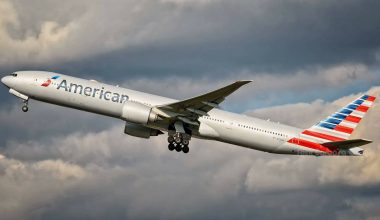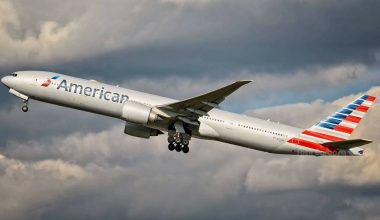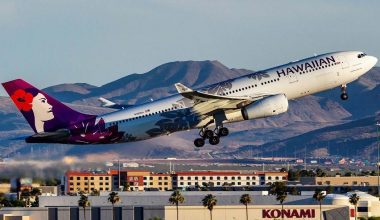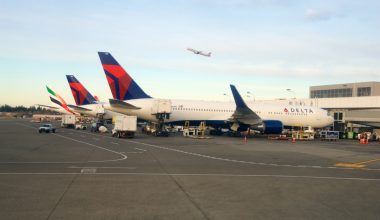Song Airlines was a low-cost carrier of major US airline Delta Airlines founded in 2003. Operated and owned by Delta from 2003 to 2006, it targeted holiday travelers between the northeastern US and Florida that competed with JetBlue and other low-cost airlines. It also provided flight services on the Florida-Westcoast route and Northeast-Westcoast routes.
Song Airlines commenced its operations on April 15, 2003, with its all-economy Boeing 757s. It concentrated its air traffic from hubs New York John F. Kennedy International Airport and Orlando International Airport. Headquartered in Atlanta, Georgia, the airline focused on the cities of Boston and Fort Lauderdale to operate its air services.

Song was one of the best coach airlines in the US. Colorful seats, touchscreen TV’s and other amenities offered by Song really made great flying for customers. Customers got to experience friendly skies with Song Airlines for 3 years. The short-lived Song brand was re-integrated into Delta Airlines in 2006, three years after its creation.
Launching of Song Airlines
The low-cost subsidiary of Delta, Song was formed at a time where the market environment was extreme due to rising fuel prices, operational costs, and increased security requirements. Customers’ expectations for lower fares were surging up while the airline costs generated more problems for airlines to remain operational in that space.
Also Read: What are Delta Airlines future plans?
Song Airline stepped as a low-cost carrier of Delta replacing Delta Express featuring 36 one class 757s on 199 seat arrangement and running bypass routes from Northeast to Southeast. It sought to simplify fare structure on routes it served. The Song brand operated more than 200 flights a day transporting over 10 million passengers. 45 aircraft consisting of Boeing 757-200s were operated to fly to 17 destinations in the US and the Caribbean. They include Aruba, Puerto Rico, U.S Virgin Islands, California, Connecticut, Florida, Massachusetts, Nevada, New York, Washington, etc. Throughout its history, the low-cost Delta brand served 22 destinations. The airline was notable for its luxurious features with leather seats, seatback screens, and MP3 Music. So, it won over a sizeable number of travelers to opt for it on flights between New York and Florida holiday destinations. Affordable prices, legroom, and branded food items on board the aircraft were the emphasized qualities of Song LCC. The airline reached its peak in 2005 where it flew 48 Boeing 757-200s to the extensive network of 16 destinations across the US.
Song Airlines was indulged in a long-term strategy to travel style-conscious professional women and is the first airline to do so. As women play a key role in deciding leisure trips, the airline created a marketing campaign to attract the discount diva women between the ages of 35 and 54 who want an affordable price and family-friendly amenities with healthy branded meals, vibrant airline interior, personable flight attendants, and awesome entertainment stream options.
The marketing strategy of Song Airlines was to minimize unit costs and maximize the unit volumes with bigger airplanes. Changes in airplane fleet to seek big aircraft leveled up the seat volume by 70%. The airline was vested in achieving operational efficiency through optimal utilization of the resources (planes, employees, logistics). More operational hours for airlines meant increased logistics. Song Sought to achieve low-cost by extensive utilization of cost-effective distribution channels including internet and repurposing its parent company Delta’s aircraft, ticket booking system, flight crews, and airport materials.
Impressive features of Song Airlines
Lively colors, free personal MP3/TV/Trivia/ Game systems, Organic food, Sky-high martinis, leather seats, low fares all were impressive features of Song Airlines. Song as Delta’s riposte promised cheerful service. The lime-green jet with apple martinis created an extended sense of hysterical happiness.
- Song’s seatback TV System offered 24 channels of Satellite TV, pay-per-view movies, dozens of CDs, etc.
- The menu of decent-quality food tasted good for the soul. All-organic ingredients sourced from local New York and Florida farmers relished customers onboard.
- Cozy Legroom i.e. 33′ of legroom per seat ensured extra comfort for the passengers, which was more than Delta and JetBlue.
- Frequent flyer programs were also included. The advantage for the customers to use and redeem Delta Skymiles on Song flights was a winner over the passengers.

Song was the leader in introducing satellite TV as onboard entertainment, Delta Airlines Inc. Video Games. The service offered by Song was above and beyond the standard airline amenities to give flyers a break from dreary, dull flight experiences of the past. Song increased online booking vigorously as a distribution channel member. Delta Airlines embarked on its mission to cater to vacationers with recreation options on air travel with low-cost alternatives through the Song brand and tried to compete with hip low-cost JetBlue. Song also had preflight meal ordering options for passengers. Song has been a home run that provided a throat-cut competition to other carriers.
Creative marketing by Song Airlines
To raise brand awareness was the goal of Song Airlines. It introduced creative marketing to create a culture for Song not just commercial and express whimsical nature to connect customers. It featured food, entertainment, culture, experiences, emotions, and atmosphere found on the airline which was entertaining and funny but didn’t feature planes or even travelers so most customers couldn’t get an exact insight into what was the reason behind the advertisement. Song somehow could break through the clutter of American advertisement by leaving a mark on one’s emotions, yet failed to create a solid brand identity and use Song as an airline. The promotional videos of Song Airlines emphasized style, health, and entertainment that couldn’t achieve the goal of introducing Song on the key point of low fares. It also culminated in the failure of Song brand in one part.
Failure of Song Airlines
On May 6, 2006, Atlanta-based Delta Airlines eliminated its discount unit as part of its bankruptcy restructuring. Both Delta and Song filed for bankruptcy protection on September 14, 2005, citing the skyrocketing costs of jet fuels and others. The nation’s one of the largest airlines racked up more than $10 billion in losses as it couldn’t weather the turbulence caused by the 2001 terrorist attack, fuel costs that almost eclipsed employee costs, and intense rivalry from JetBlue, Air Tran, etc. Although Delta management made herculean efforts to reduce costs and increase the revenue through a variety of initiatives, it failed to avoid bankruptcy and as a result, it announced to close Song and cut marketing and other costs.
Song competed well against JetBlue and Southwest along price margins with a cost per seat mile of eight cents. However, Song couldn’t reach its potential profitability due to its choice of aircraft Boeing 757. Song could make more money with 757 in case all seats were occupied but they were not. Bigger airplanes take much turnaround time on the ground. More time on the ground implies less revenue for airlines; the same occurred to Song.
As seen at @dlflightmuseum: For Song Airlines, Kate Spade designed the female uniforms and accessorized them with Kate Spade shoes and bags. RIP Kate ???? pic.twitter.com/A1I8DmZikF
— airlineguys (@airlineguys) June 5, 2018
Another reason why Song Airlines failed was targeting a small group of people i.e. women. While Song intended to target a specific group of women that they felt other carriers lacked, it left out the majority of consumers which could be businessmen or others.
The non-traditional brand and marketing, in-flight customer experiences, novel cleaning, all made Song Airlines stand out in the market. In the case of overall service, Song never made its customers sad. What made it stop singing was its guerrilla marketing, heavy core customer dependency, and inability to maintain profit in 3 years it was in the air. Song couldn’t get as much financial success as it had hoped.
Lesson for Delta Airlines
Though Song had a short-term career, it is not a complete failure. Song’s airplanes underwent retrofits with a first-class product on lucrative transcontinental routes to target loyal business travelers. Although it is integrated into long Delta Air Lines domestic routes, Song hasn’t disappeared; it is forever in the new Delta.
Delta used the Song brand to make an experiment on new concepts such as zonal aircraft boarding, turnaround time, value-pricing strategy, opening concept stores to attract customers, personable flight attendants in designer clothing, the online presence among others. Delta Airlines learned a great lesson on how to use a marketing approach and build a strong identity of a high-end airline. In fact, Delta has vastly improved economy class experience on long-haul international flights introducing welcome drinks, hot towel service, main meals, and arrival chocolates as a gesture to thank passengers. Delta has integrated Song’s more popular features to retain leisure travel services.

Song Airline is an example of a failed attempt by the mainline carrier to launch a low-cost airline within airlines. The demise of Song Airlines has proved to be quite beneficial for Delta in the long term. It’s because 3 years of operations of Song taught Delta to put their focus on something profitable and continue to innovate services for customers.
It has now been 18 years since Song was designed as a hip travel option for leisure passengers with multiple fascinating amenities that allowed Delta to try new services. For Southwest, Song’s operational discontinuation cemented its position as a successful budget carrier. Many of Song’s 757s are still taking to the skies today.






